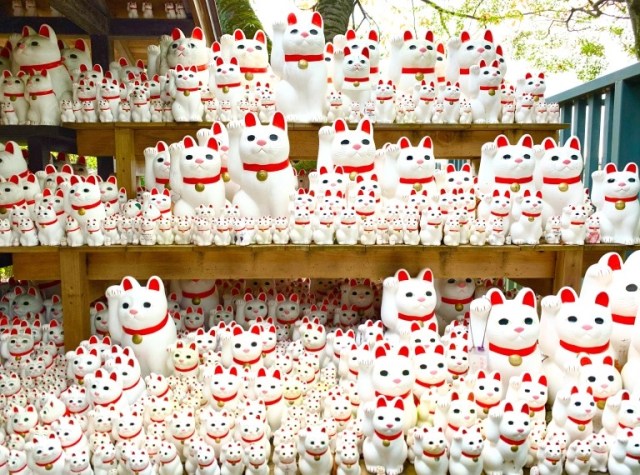
Gotokuji claims the figurines are “sacred.”
Located in Tokyo’s Setagaya Ward, Gotokuji’s name translates to “temple of great virtue.” And sure, as a Buddhist temple, it is a place for the virtuous, but it’s also a place for cat lovers.
That’s because on any given day you can expect to see somewhere around 10,000 manekineko, or “beckoning cat,” figurines on display on the temple grounds.
Legend has it that 400 years ago, when a prominent samurai lord was traveling throuh the area, he became caught in a violet thunderstorm. Looking for refuge from the lightning that was beginning to fall, the samurai spotted a cat that beckoned to him. He followed it to Gotokuji, where the monks gave him shelter until the storm passed, and in gratitude the samurai became the temple’s providing patron thereafter.
That’s why, to this day, Gotokuji sells beckoning cat figurines in the temple’s store, and recently they’ve become a big hit with visiting foreign travelers, as seen in the news report here.
The temple no doubt appreciates the patronage. Each figurine sells for between 500 and 7,000 yen (approximately US$3.25 and US$45), depending on size, and the temple says it’s been selling up to 800 in a single day during the ongoing travel boom. However, there’s one thing the temple is less happy about, which is people writing wishes or other messages on the figures.
A woman visiting from Germany, seen at the point cued up in the video here, has written the name of her pet cat on the figurine, which she says she plans to leave at the temple as a wish for her pet’s continued health. Another figurine with a wish for health, written in Chinese, and one with various currency symbols, apparently in hopes of achieving economic prosperity, can also be seen.
The temple says it does not want people to do such things, and has now posted a multilingual written notice, saying:
“The cat figurines are sacred items. Please do not scribble on them.”
There are actually a few different unusual aspects to the situation. First, manekineko figurines aren’t usually thought of as sacred within Japanese culture. Yes, they’ve been seen as good luck symbols for hundreds of years, with the cat’s raised paw said to beckon customers to businesses or wellness and wealth to a household. Those purported powers, though, aren’t ascribed to any religious energy or divine authority.
Manekineko aren’t exclusive to Gotokuji, nor did they originate at the temple, so this isn’t a case of a once-sacred object having its air of divinity eroded. Manekineko are readily available in souvenir shops, and while they have the same quasi-supernatural image of any good luck charm, they’re generally seen by people in Japan as a secular one.
At the same time, it is unusual to write wishes on manekineko. Written wishes typically go on ema, wooden boards that are also commonly sold at temples and shrines in Japan, and which are supposed to be hung on a special rack on the temple/shrine grounds to boost their wish-granting powers. Manekineko, on the other hand, are meant to provide a broader, less specific sort of good luck.
▼ Ema
So saying “A manekineko is sacred, so don’t write on it” is kind of like saying “A rabbit’s foot is sacred, so don’t write on it.” It’s a stretch to call it sacred…but it’s also weird to write on it.
It’s also worth pointing out that while the behavior of foreign tourists is becoming a topic of increased public awareness as Japan sees record-breaking numbers of inbound international travelers, people writing on their manekineko at Gotokuji isn’t a phenomenon that only started in the post-pandemic travel boom. When we visited the temple in 2019, we saw a few figurines with written messages on them then too.
The temple’s “please don’t write on the manekineko” notice is also written in both English and Japanese, suggesting that the temple feels even locals could possibly use a reminder, as seen at the point in the video here.
Still, even if it’s not only foreigners writing on manekineko, the large number of foreign visitors the temple is getting these days means that even if a small percentage of them are writing on the figurines, there’re going to be enough to get noticed. With the temple having specifically asked that people not write on them, the polite thing to do is to comply with the request. And if the idea of a temple dictating what you can and can’t do with a secular object that you’ve purchased doesn’t sit right with you? Well, when we visited the temple, they told us that there aren’t any set rules as to whether or not you need to leave the figurine you purchased at the temple for your wish to come true. Taking it home with you provides the exact same boost to your good fortune, they told us, so if you feel like you absolutely have to write on it, it’s probably best to wait until you get home to do so.
Source: YouTube/ANNnewsCH
Ema photo: Pakutaso
All other photos ©SoraNews24
● Want to hear about SoraNews24’s latest articles as soon as they’re published? Follow us on Facebook and Twitter!

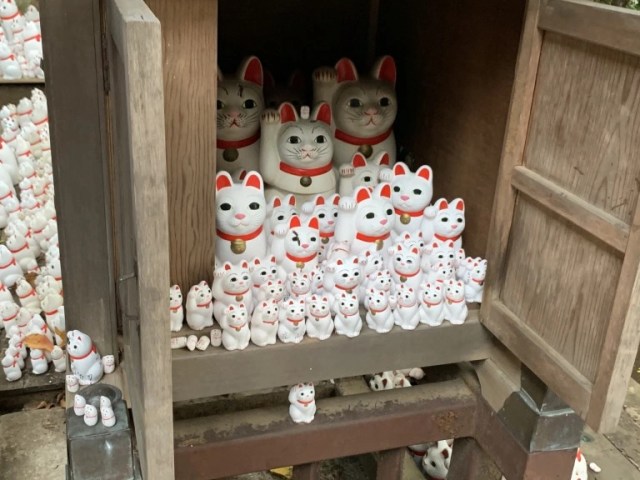
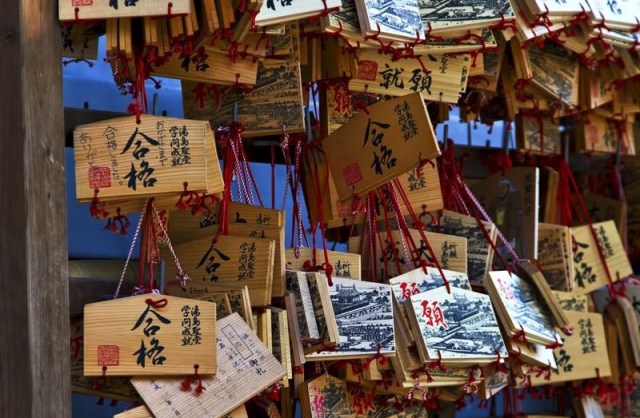
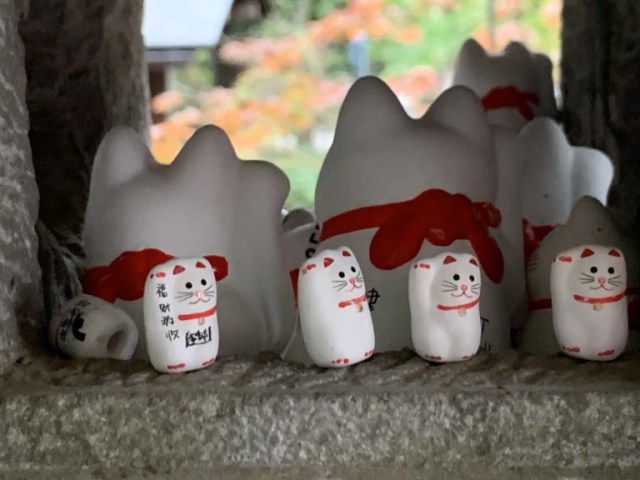
 A visit to Japan’s cat beautiful, quirky, and touching cat temple, Unrinji【Photos】
A visit to Japan’s cat beautiful, quirky, and touching cat temple, Unrinji【Photos】 Invite some luck into your life this year with Furla’s new Little Cats collection of merch
Invite some luck into your life this year with Furla’s new Little Cats collection of merch Take a ride on Japan’s luckiest tram in Setagaya
Take a ride on Japan’s luckiest tram in Setagaya Japanese Lucky Beckoning Cat banknote design is the faux money we wish was real
Japanese Lucky Beckoning Cat banknote design is the faux money we wish was real Flush your prayers down the toilet at this unique Japanese temple
Flush your prayers down the toilet at this unique Japanese temple Japan’s new difficult-to-drink-from beer glass protects your liver, but it’s a brutal experience
Japan’s new difficult-to-drink-from beer glass protects your liver, but it’s a brutal experience New samurai glasses are Japan’s latest weird must-have souvenir
New samurai glasses are Japan’s latest weird must-have souvenir How to order snacks on a Shinkansen bullet train in Japan
How to order snacks on a Shinkansen bullet train in Japan Infographic shows how working culture differs across the globe
Infographic shows how working culture differs across the globe New Pokémon ice cream, dessert drinks, and cool merch coming to Baskin-Robbins Japan【Pics】
New Pokémon ice cream, dessert drinks, and cool merch coming to Baskin-Robbins Japan【Pics】 Caffeinated ramen for gamers that you can eat with one hand going on sale in Japan
Caffeinated ramen for gamers that you can eat with one hand going on sale in Japan New Nintendo Lego kit is a beautiful piece of moving pixel art of Mario and Yoshi【Photos】
New Nintendo Lego kit is a beautiful piece of moving pixel art of Mario and Yoshi【Photos】 To combat declining birth rate, Japan to begin offering “Breeding Visas” to foreigners
To combat declining birth rate, Japan to begin offering “Breeding Visas” to foreigners Demon Slayer: Kimetsu no Yaiba gets new roller coaster attractions and food at Universal Studios Japan
Demon Slayer: Kimetsu no Yaiba gets new roller coaster attractions and food at Universal Studios Japan High-fashion Totoro cuddle purse is like an elegant stroll in the forest【Photos】
High-fashion Totoro cuddle purse is like an elegant stroll in the forest【Photos】 Nintendo history you can feel – Super NES, N64, and GameCube controllers become capsule toys
Nintendo history you can feel – Super NES, N64, and GameCube controllers become capsule toys Hello, cosmetics! Clinique teams up with Hello Kitty this summer for first-time collaboration
Hello, cosmetics! Clinique teams up with Hello Kitty this summer for first-time collaboration “The most Delicious Cup Noodle in history” – Japan’s French Cup Noodle wins our heart【Taste test】
“The most Delicious Cup Noodle in history” – Japan’s French Cup Noodle wins our heart【Taste test】 Starbucks releases a cute Frappuccino and Unicorn Cake…but not in Japan
Starbucks releases a cute Frappuccino and Unicorn Cake…but not in Japan Kyoto Tower mascot termination reveals dark side behind cute Japanese characters
Kyoto Tower mascot termination reveals dark side behind cute Japanese characters McDonald’s Japan’s Soft Twist Tower: A phantom ice cream only sold at select branches
McDonald’s Japan’s Soft Twist Tower: A phantom ice cream only sold at select branches Yabai Ramen: What makes this Japanese ramen so dangerous?
Yabai Ramen: What makes this Japanese ramen so dangerous? Finally! Nintendo Japan expands Switch 8-bit controller sales to everybody, Online member or not
Finally! Nintendo Japan expands Switch 8-bit controller sales to everybody, Online member or not Japanese government wants to build luxury resorts in all national parks for foreign tourists
Japanese government wants to build luxury resorts in all national parks for foreign tourists 10 things you should buy at 7-Eleven in Japan
10 things you should buy at 7-Eleven in Japan Studio Ghibli releases anime heroine cosplay dresses that are super comfy to wear
Studio Ghibli releases anime heroine cosplay dresses that are super comfy to wear Woman charged for driving suitcase without a license in Osaka
Woman charged for driving suitcase without a license in Osaka Studio Ghibli unveils My Neighbour Totoro miniature house model
Studio Ghibli unveils My Neighbour Totoro miniature house model Kyoto experiencing problems with foreign tourists not paying for bus fares, but not on purpose
Kyoto experiencing problems with foreign tourists not paying for bus fares, but not on purpose Fighting mild hunger with a Japanese soda that turns into jelly in the stomach【Taste test】
Fighting mild hunger with a Japanese soda that turns into jelly in the stomach【Taste test】 Studio Ghibli’s Howl’s Moving Castle tapestry unveiled in Japan for first time
Studio Ghibli’s Howl’s Moving Castle tapestry unveiled in Japan for first time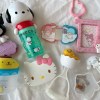 McDonald’s new Happy Meals offer up cute and practical Sanrio lifestyle goods
McDonald’s new Happy Meals offer up cute and practical Sanrio lifestyle goods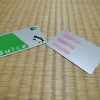 Sales of Japan’s most convenient train ticket/shopping payment cards suspended indefinitely
Sales of Japan’s most convenient train ticket/shopping payment cards suspended indefinitely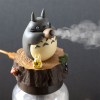 Sold-out Studio Ghibli desktop humidifiers are back so Totoro can help you through the dry season
Sold-out Studio Ghibli desktop humidifiers are back so Totoro can help you through the dry season Japanese government to make first change to romanization spelling rules since the 1950s
Japanese government to make first change to romanization spelling rules since the 1950s Foreigner’s request for help in Tokyo makes us sad for the state of society
Foreigner’s request for help in Tokyo makes us sad for the state of society Ghibli founders Toshio Suzuki and Hayao Miyazaki contribute to Japanese whisky Totoro label design
Ghibli founders Toshio Suzuki and Hayao Miyazaki contribute to Japanese whisky Totoro label design Doraemon found buried at sea as scene from 1993 anime becomes real life【Photos】
Doraemon found buried at sea as scene from 1993 anime becomes real life【Photos】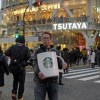 Tokyo’s most famous Starbucks is closed
Tokyo’s most famous Starbucks is closed Princesses, fruits, and blacksmiths: Study reveals the 30 most unusual family names in Japan
Princesses, fruits, and blacksmiths: Study reveals the 30 most unusual family names in Japan Temple camping in Japan at Wakayama’s Daitaiji【Photos】
Temple camping in Japan at Wakayama’s Daitaiji【Photos】 “Graffiti Temple” in Kyoto, where visitors are encouraged to deface the walls
“Graffiti Temple” in Kyoto, where visitors are encouraged to deface the walls A visit to the ordinarily forbidden hall of Nara’s Hasedera Temple【Photos】
A visit to the ordinarily forbidden hall of Nara’s Hasedera Temple【Photos】 Terahaku aims to be the Airbnb of Japanese temples
Terahaku aims to be the Airbnb of Japanese temples A visit to Japan’s centuries-old boob temple
A visit to Japan’s centuries-old boob temple Buddhist monks cultivate cat haven at Fukui Prefecture’s “Kitty Temple”
Buddhist monks cultivate cat haven at Fukui Prefecture’s “Kitty Temple” Purify the hate of Internet jeers with Japanese temple’s first online ceremonial fire
Purify the hate of Internet jeers with Japanese temple’s first online ceremonial fire Tera Ango now offers the chance to live and take part in daily practices at a Buddhist temple
Tera Ango now offers the chance to live and take part in daily practices at a Buddhist temple This little-known temple in rural Japan has a giant Buddha bigger than Kamakura’s or Nara’s【Pics】
This little-known temple in rural Japan has a giant Buddha bigger than Kamakura’s or Nara’s【Pics】 Giant temple in mountains of Japan is also one of its most impressive tapioca bubble tea cafes
Giant temple in mountains of Japan is also one of its most impressive tapioca bubble tea cafes Wannabe science fiction writer graffitis centuries-old Kyoto temple for extremely weird reason
Wannabe science fiction writer graffitis centuries-old Kyoto temple for extremely weird reason Refresh your mind, body, and soul at Temple Camp Daitaiji, the first temple to open to campers
Refresh your mind, body, and soul at Temple Camp Daitaiji, the first temple to open to campers Fake monks targeting foreign visitors to Japan?
Fake monks targeting foreign visitors to Japan? The Cat in the Surgical Mask – Twitter user plans to raise money for charity with feline figurine
The Cat in the Surgical Mask – Twitter user plans to raise money for charity with feline figurine Love doll funeral service in Japan helps silicone lovers rest in peace
Love doll funeral service in Japan helps silicone lovers rest in peace
Leave a Reply